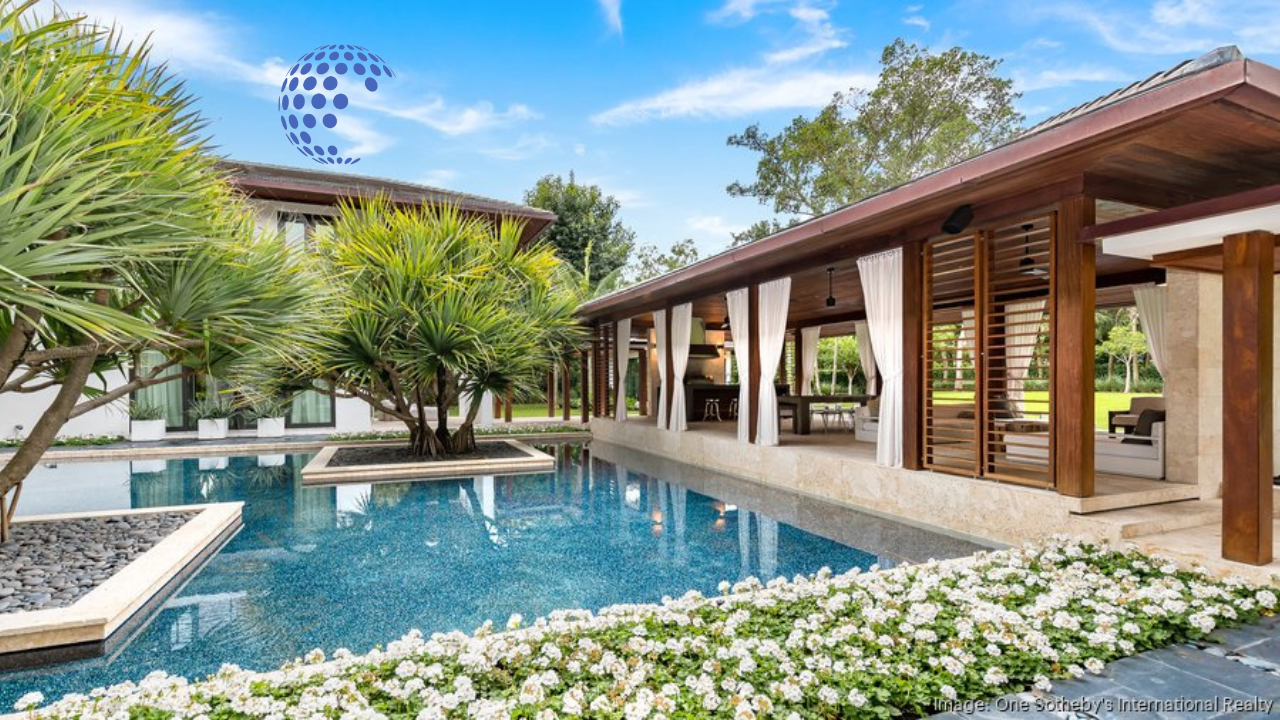The Andre Hakkak House: Preserving a Heritage Through Architecture

The Andre Hakkak house is a traditional architectural structure showcasing the Hakka people’s unique style and cultural heritage. Typically found in the mountainous regions of southeastern China, these homes are known for their round or square shape, fortified walls, and communal living spaces. The Andre Hakkak house stands as a testament to the resourcefulness and resilience of the Hakka culture, preserving their way of life through generations.
Unveiling the Andre Hakkak House: A First Look
Discovering the Andre Hakkak house offers a remarkable glimpse into the ingenious architectural practices of the Hakka people. These structures, distinguished by their unique circular or square configurations, are a marvel of traditional Chinese construction. The walls of these fortified homes are built with a blend of locally sourced materials, including earth, wood, and stone, contributing to their sustainability and ability to shield the inhabitants from external threats and the elements.
The facade of an Andre Hakkak house is often adorned with detailed woodwork and stone embellishments, reflecting the Hakka’s exquisite craftsmanship and aesthetic sensibilities. This architectural gem provides a sanctuary for its residents and embodies the Hakka people’s cultural identity and communal ethos. As we delve deeper into the aspects that make the Andre Hakkak house a fascinating subject of study, we uncover the layers of history, culture, and innovation that have sustained these dwellings over centuries.
The design intricacies serve practical defensive purposes and facilitate a way of life emphasizing communal living and harmony with nature. Each element, from the choice of materials to the strategic layout, reveals the Hakka’s profound connection to their environment and unwavering commitment to preserving their heritage. As we explore further, the Andre Hakkak house continues to unfold its stories, offering insights into a way of life that thrives on cooperation, shared values, and resilience.
The Architecture of Resilience: Materials and Design
The very foundation of the Andre Hakkak house reflects the ingenuity and adaptive strategies of the Hakka people to their environment. Utilizing earth, wood, and stone—resources that were abundantly available in the rugged terrains they inhabited—these structures were ingeniously constructed to withstand the test of time and nature. The thick earthen walls, complemented by wooden beams and stone reinforcements, not only offered protection from potential invaders but also played a crucial role in insulating the interior from the extremes of weather, maintaining a comfortable living environment throughout the year.
The architectural design goes beyond mere functionality; it is a physical embodiment of the Hakka’s understanding of their environment and their determination to thrive within it. The strategic placement of small windows maximizes ventilation while minimizing exposure to the elements. These homes’ compact, fortified nature served a dual purpose: facilitating a solid defense mechanism against external threats and fostering a tightly-knit community life within its confines.
In crafting these dwellings, the Hakka people demonstrated a remarkable balance between the demands of their immediate environment and the need for a sustainable, communal lifestyle. The chosen materials ensured durability and reflected a deep respect for the natural surroundings by utilizing locally available resources, minimizing their ecological footprint. This harmonious integration of practicality, environmental consciousness, and communal living underscores the essence of the Andre Hakkak house, showcasing architectural wisdom that inspires admiration and study.
The Heart of Community: The Central Courtyard
At the core of every Andre Hakkak house lies the central courtyard, a vibrant and essential space where the rhythms of daily life unfold. More than just an architectural feature, this open area encapsulates the spirit of Hakka communal living. Here, under the open sky, the courtyard becomes a stage for the myriad aspects of social life among the residents. From dawn until dusk, it is animated with the chatter of neighbors, the laughter of children playing, and the shared labor of daily chores.
This communal heart pulses with cultural practices and traditions, hosting celebrations and festivals that reinforce the bonds within the community. The courtyard’s design, deliberately placed at the center of the house, ensures that it is an accessible and welcoming space for all residents. It acts as a natural gathering spot, encouraging interactions and strengthening the social fabric of the Hakka community.
Within this shared space, the values and customs of the Hakka people are vividly alive, passed down from one generation to the next. Activities centered around the courtyard, from communal meals prepared in open-air kitchens to traditional dances and ceremonies, foster a sense of belonging and identity among the inhabitants.
Thus, the courtyard is not merely a physical space but a living testament to the Hakka ethos of community and cooperation. It exemplifies how architecture can facilitate and enrich a community’s social life, making the Andre Hakkak house much more than a dwelling. It becomes a home where memories are made, traditions are celebrated, and a sense of community is nurtured.
Living with Tradition: The Communal Lifestyle
In the fabric of Hakka society, the Andre Hakkak house embodies the principle of collective living, a cornerstone of their cultural ethos. Within these architectural wonders, the boundaries between individual and community blur, creating a shared existence that is both pragmatic and deeply enriching. The communal lifestyle extends beyond mere space sharing; it encompasses the mutual support and shared responsibilities vital for sustaining life in these close-knit communities.
Kitchens and dining areas, often large and open, serve as communal hubs where meals are prepared and enjoyed together, reinforcing the bonds of kinship and friendship. These spaces, bustling with activity and conversation, are where culinary traditions are handed down, and the day’s stories are exchanged over shared meals. The architecture itself, with its common areas and open courtyards, facilitates these interactions, ensuring that communal life flourishes.
Similarly, the agricultural practices and maintenance of the house and its surroundings are collective efforts. Residents work together in the fields and share the fruits of their labor, embodying the Hakka spirit of cooperation and mutual aid. This collaborative approach to living ensures the community’s survival and the preservation of their cultural identity and traditions.
Through its communal lifestyle, the Andre Hakkak house provides a living model of social harmony and sustainability. It teaches us the value of cooperation and the strength found in community, lessons that remain as relevant today as they were for generations past.
The Andre Hakkak House as a Cultural Heritage
The significance of the Andre Hakkak house transcends its physical form, embodying the Hakka community’s enduring spirit and cultural legacy. These architectural masterpieces are not merely residences but repositories of a rich cultural narrative carefully curated over centuries. Each structure, with its distinctive design and communal spaces, serves as a living museum, showcasing the intricate blend of innovation, tradition, and communal harmony that defines Hakka heritage.
The design elements, from the protective walls to the central courtyard, narrate tales of adaptation, resilience, and social cohesion, reflecting the collective wisdom and values of the Hakka people. Ancient customs and rituals continue to thrive in these spaces, enabling a dynamic interaction between past and present.
Therefore, preserving the Andre Hakkak house is an act of cultural conservation, ensuring that the Hakka’s unique identity and historical achievements are honored and remembered. Through these efforts, the architectural legacy of the Hakka not only survives but remains a vibrant and active part of their community’s life, offering insights and inspiration to both residents and visitors. The preservation of these homes thus plays a crucial role in maintaining the cultural fabric of the Hakka people, allowing their historical narrative and communal ethos to be shared with the world.
Read More
Conservation Efforts and the Future of the Andre Hakkak House
In the face of modernization, preserving the Andre Hakkak house has become a paramount concern. Efforts to safeguard these unique structures are increasingly vital, representing a significant part of the Hakka people’s cultural heritage and historical narrative. Various initiatives are underway to maintain and restore these architectural landmarks, ensuring their endurance for future generations to admire and study. These efforts often combine traditional building techniques and modern conservation technologies to balance authenticity and longevity.
Local communities and cultural heritage organizations play a crucial role in these endeavors, advocating for the significance of the Andre Hakkak house in the broader context of global history and architecture. Educational programs and cultural tourism are also being developed to raise awareness and generate support for these conservation projects. By actively preserving the Andre Hakkak house, we contribute to a deeper understanding and appreciation of the Hakka culture, offering a window into the past that informs our present and shapes our future.



